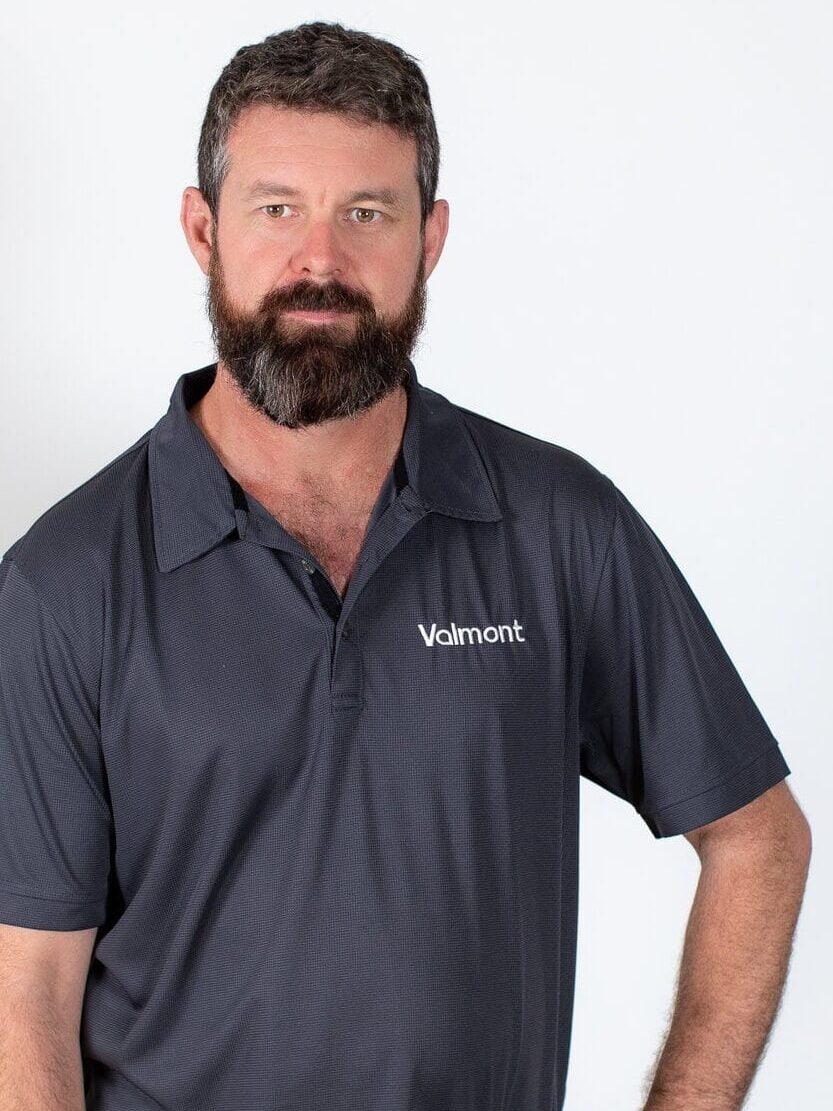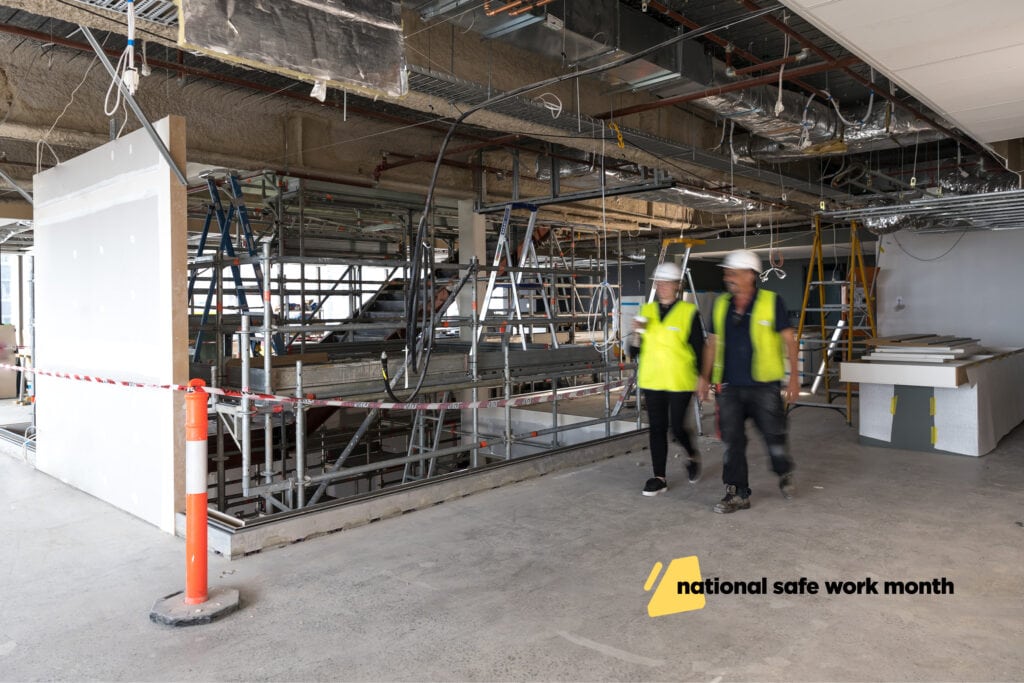October is National Safe Work month, and to help drive greater awareness and action, our HSEQ Leader, Jasmin Shelley, will be publishing articles that align with Work Safe month’s weekly themes. Jasmin will also connect with onsite team members to hear their perspectives.
Jasmin joined Valmont early in 2023. She is currently studying Neuropsychology and has a passion for psychosocial health.
This week, the work safe theme is Working Together to Manage Risks at Work. Here, Jasmin reviews the risk assessment process, from identification and assessment of hazards to the selection, implementation and review of control measures.
___
I have been working in safety for 18 years and it’s notable that despite evolving systems, processes and compliance measures, there are still injuries and fatalities right across the industry. Systems, processes and vast amounts of compliance and documentation keep growing every year, yet with little to no change to industry-wide injury and fatality rates year on year.
Now more than ever it’s time to do ‘Safety Differently’, by focusing on the ‘why’. Why do organisations rely on paper to keep workers safe? Bureaucracy is the disconnection between process and purpose and we need to take a deep dive into why our industry has become ‘paper safe’.
The process of managing paper-based documentation (inspections, checklists and audits etc) as evidence of activity is no proof that safety is being managed effectively or manages legal risk. Collectively, we must implement an industry-wide move toward ensuring workers understand the purpose of their safety activities and operational requirements (the evidence of purpose and intent) – ‘why’ they are required to do things a particular way (Smith, 2018).
We need to train people to understand and apply the three key principles of Risk Management to keep them safe, rather than relying on paper tick and flick activities which only measure activity, not how well they actually completed the task. The goal is for all workers to fully understand the Risk Management process:
1. How to identify hazards
2. How to assess the risk, and
3. What controls are needed to manage them.
We need to continually engage and empower our vast pool of sub-contractors to adopt the same ethos towards safety across every site nationally, to ensure we have a holistic and solid approach to safety.
Final thoughts on managing risks
Complex and bureaucratic safety management systems are disengaging our workforce and diminishing the standing of health and safety in our organisations.
“A significant part of the role of a safety person in an organisation is taken up with bureaucracy: writing policies and procedures, documenting and auditing safety processes, inspections, regulatory compliance, reports and so on. Safety becomes the “Compliance Police” continually enforcing negative messages in the organisation such as disciplinary action, non-compliance, incidents, deviations, all which leaves the workforce defensive and in many cases hostile towards the safety department.” .
Dekker & Rae, 2017
‘Safety Different’ hands back control of safety to the workers, frees our foremen and managers of being tied down with paper evidence and releases them to be able to supervise activities and focus on its purpose and intent of keeping our people safe.
An onsite perspective of risks
Let’s hear from Ash Watson, Site Supervisor, Perth.

So Ash, how do you manage risks on your sites?
Preparation is key – going through hazmat reports and developing your risk register for the site. Reviewing plans and discussing them with your team to mitigate risks on-site well before they happen. Many issues can be prevented by spending the time to review these areas before the site is mobilised.
Signage is a great visual backup to toolbox meetings and procedures, but placement is key – no-one will see a sign above eye level or in an area with 200 other signs.
Within toolbox talks, running through SNN’s and recapping on safety processes from manual handling to Hot Works and everything in between.
What collective improvements have you seen that have made a positive difference to safety onsite?
Recent audits of the safety documents and the reviews to the safety standards have ensured the steps we take for our project’s safety are relevant, up-to-date and applicable to the site. This cuts down on irrelevant and unnecessary steps that take up precious time of the site managers and other team members completing forms in triplicate for each department. Using a program like Procore to its full potential ensures everyone knows what is expected of them and documents are easily accessible by all parties, keeping communication clear and accountable.
How do you think we can we improve how we work with our sub-contractors, to increase their knowledge and awareness of risks on site?
Providing documents, training and agreements only works so far. If the contractor is not personally invested in the outcome, their actions are minimal. Together [with Jasmin], we are working on a Contractor Rewards and Recognition program which aims to provide recognition and incentives to individuals and businesses that support our vision and help us build a strong safety culture across our projects . This could create real change and is something that I am excited and passionate about. We need everyone on site to have the same level of regard to safety, this is key.
Weekly topics in full
Here’s a little more detail on what we’ll be covering as part of Safe Work Month, including links out to the Safe Work Australia website:
Week 2 (9-15 October) – Working together to protect workers’ mental health
Protecting workers’ mental (psychological) health is just as important as protecting their physical health.
In week 2 of National Safe Work Month, learn how to identify psychosocial hazards and manage the associated risks to protects workers, and organise something at work to acknowledge World Mental Health Day on 10 October.
Week 3 (16-22 October) – Working together to support all workers
All workers have the right to be safe at work.
Factors known to affect workers’ WHS vulnerability include being younger, working alone, being from a culturally and linguistically diverse background or working in a more complex contractual chain (e.g. labour hire).
In week 3 of National Safe Work Month, learn what PCBUs must do to manage risks to the health and safety of vulnerable workers.
Week 4 (23-31 October) – Working together to ensure a safe and healthy workplace
Workers continue to be injured or made unwell by work. Let’s keep workers safe and healthy by ensuring WHS is core to how we do business in Australia.
During the final week of National Safe Work Month, learn about the future of work health and safety, including changing patterns and ways of working as well as the emergence of new forms of work.
